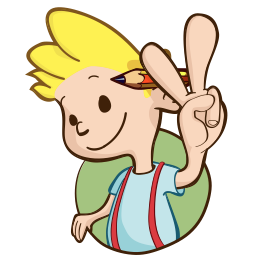 Today is the day! We finally announced my next game: Casey’s Contraptions.
Today is the day! We finally announced my next game: Casey’s Contraptions.
This is a bit of a different project than some of my past ones. This one is a collaboration with Miguel Ãngel Friginal from Mystery Coconut. I’m doing the programming, Miguel is doing all the art, and we’re both contributing equally to the design and everything else. It has been great having some awesome art to go with the game, but also to collaborate with someone really closely on the game.
Casey’s Contraptions was one of those ideas for a game that I kept wanting to make for quite a while, and now it was finally the right time. It meets the three main requirements that I’m looking for in a game project:
- Something original
- Has potential to sell well
- It involves a creative activity (instead of something violent or destructive)
The idea of games based on mechanical contraptions is not new, but there are surprisingly few games based on it. We are hoping to bring a lot new to the table: Casey himself, unlockable items, interface built from the ground up for multi touch, modern physics simulation, social features, sharing of solutions, and even creation and sharing of new levels. We are really excited to be working on this project and we can’t wait until it’s released.
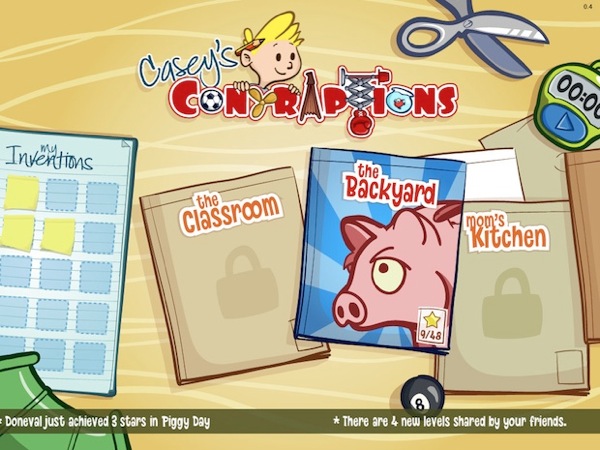
Development
Casey’s Contraptions started as a prototype back in the summer. After a day or two messing with physics engines and creating some objects, I knew there was something there, so I spent a two more weeks creating an initial version. It wasn’t much more than a tech proof-of-concept, but it was clear that there was a game there (even with my horrible stand-in clip art assets).
I sent that built to a couple of friends for initial feedback. It was laughably early, but that’s the time when it’s possible to really make radical changes to the design. I knew the people I was sending it to a) were used to seeing games at early stages, and b) were not afraid to tell me if something sucked. Actually, I told them to skip the nice parts and just focus on everything that they didn’t like. Not surprisingly, that initial feedback was crucial, and really shaped how Casey’s Contraptions evolved since then.
Shortly after that, Miguel joined me full time on the game and we dove right into it. For our development, we used a super light-weight agile approach: We have high-level “user stories”, and two week iterations. Iterations are somewhat flexible (plus minus a few days) and we don’t strictly estimate the tasks, just take on as many user stories as we think we can do in that time. The important parts are to always be focused on the most important stories, and to take them to completion each time.
Miguel lives in Seattle and I’m in Carlsbad, so we do all of our work remotely. We use Subversion hosted remotely, and we’re in constant communication through iChat and email. That allows us to iterate on a piece of art, an item behavior, or a menu item multiple times very quickly. It’s not as good as sitting side by side, but I haven’t felt like working remotely has gotten in the way at all.
After a busy month and a half, we got to where you see it today, and we submitted the game to the Independent Games Festival (IGF).
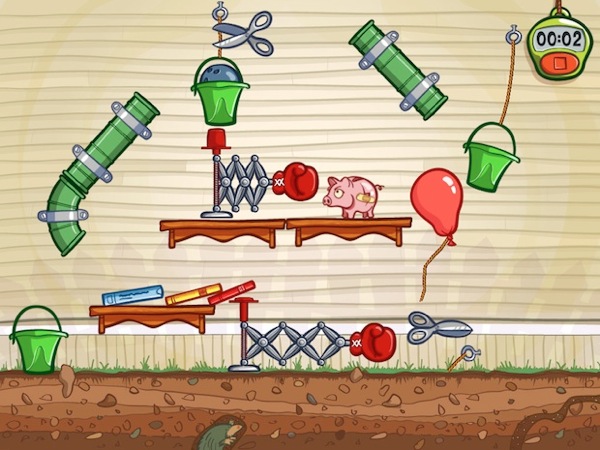
Independent Games Festival
Some people have asked me why I wanted to submit it to the IGF. I have to be honest and admit that I had never really considered not submitting it.
I imagine everybody reading this blog knows about the IGF already. It’s the closest thing to the Movie Academy Awards that we have for independent games. There are many reasons why you’d want to submit your game. The amount of press and prestige associated with winning or even being nominated as a finalist is huge. The prize money is a nice touch, but it’s not really enough to make much of a difference in the game itself (I’m talking about the Mobile Category prize). Of course, there are many other fantastic games that are competing at the IGF (a total of almost 400 games!), so it’s hard to count on becoming a finalist.
One very real and concrete reason to enter the IGF was to have a very well-defined milestone. It wasn’t that different from one of our iterations, except that we had a real customer (the IGF judges) and a non-flexible deadline. That made us really focus our efforts and put in some extra effort in the last couple of weeks to get it in shape for the IGF. Looking back at the game just a couple of weeks ago, it’s amazing how far it came in that time.
 For me personally, the biggest reason to enter the IGF is because it’s something I’ve always wanted to do. I’ve followed the IGF since the first one in 1999 (which was, coincidentally, the first GDC I attended). Every time I walked through the booths or watched the award ceremony, I wanted to be part of it. So finally, this was my chance to do it. It was a great experience going through the process. Now the next life goal will be to actually make it as a finalist.
For me personally, the biggest reason to enter the IGF is because it’s something I’ve always wanted to do. I’ve followed the IGF since the first one in 1999 (which was, coincidentally, the first GDC I attended). Every time I walked through the booths or watched the award ceremony, I wanted to be part of it. So finally, this was my chance to do it. It was a great experience going through the process. Now the next life goal will be to actually make it as a finalist.
Submitting Casey’s Contraptions had another, unexpected side effect: It tipped our hand and forced us to announce the game sooner than we were planning on doing. It wasn’t until a few days before the submission that we realized the list of IGF games would go public right away. Originally we were planning on announcing the game at 360iDev in mid November, but this forced us to move the schedule up somewhat. Hopefully that will be a good thing and will allow us to build some good buzz in the upcoming months all the way until the release. Keep an eye out for a gameplay video and some hands-on previews in the next few weeks.
If you want to keep up to date with Casey’s Contraptions development, join the Facebook group, follow Miguel and me on Twitter, or keep an eye on the Touch Arcade thread.
This post is part of iDevBlogADay, a group of indie iPhone development blogs featuring two posts per day. You can keep up with iDevBlogADay through the web site, RSS feed, or Twitter.
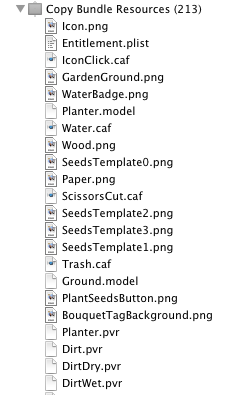 Before, I was adding all my game assets to the Resources folder in XCode. That adds the file to the “Copy Bundle Resources” step. And as you expect, when you do a build, it checks the date of the existing file, and only copies it if the source file is newer than the destination file.
Before, I was adding all my game assets to the Resources folder in XCode. That adds the file to the “Copy Bundle Resources” step. And as you expect, when you do a build, it checks the date of the existing file, and only copies it if the source file is newer than the destination file.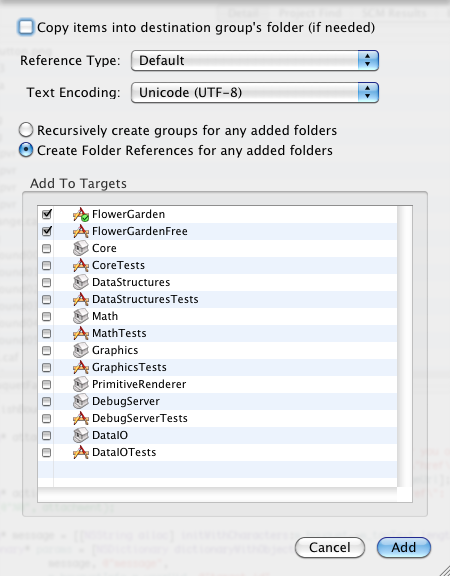

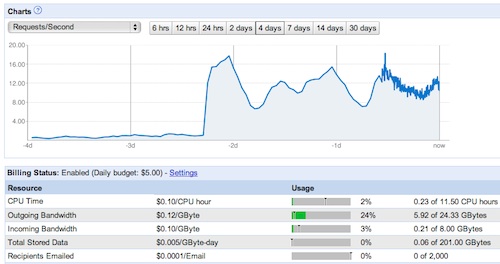

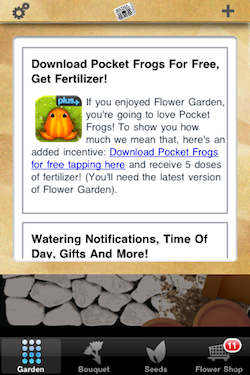 A more direct way of reaching out to your players is to have some sort of in-game news system. At any point you can update a file in your web server with any news, and it is displayed in the game. It can be implemented in many different ways depending on “on your face” you want to be about it: a pop up that comes up when the user runs the game, a ticker that runs constantly across the bottom of the screen, or, what I did for Flower Garden, a news icon with a badge indicating how many unread items there are, that brings up the news page when you tap it.
A more direct way of reaching out to your players is to have some sort of in-game news system. At any point you can update a file in your web server with any news, and it is displayed in the game. It can be implemented in many different ways depending on “on your face” you want to be about it: a pop up that comes up when the user runs the game, a ticker that runs constantly across the bottom of the screen, or, what I did for Flower Garden, a news icon with a badge indicating how many unread items there are, that brings up the news page when you tap it.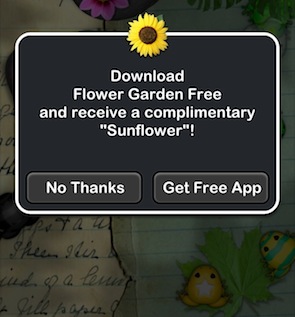
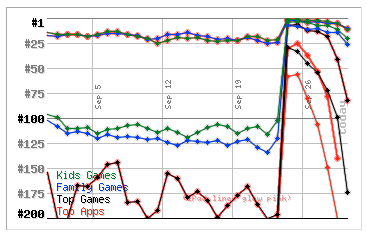
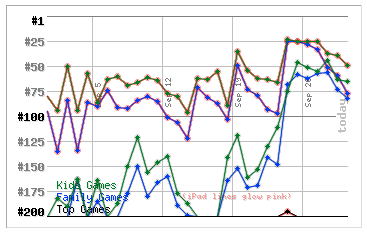
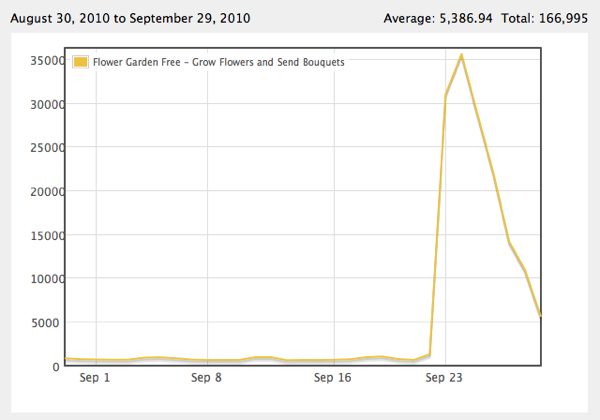
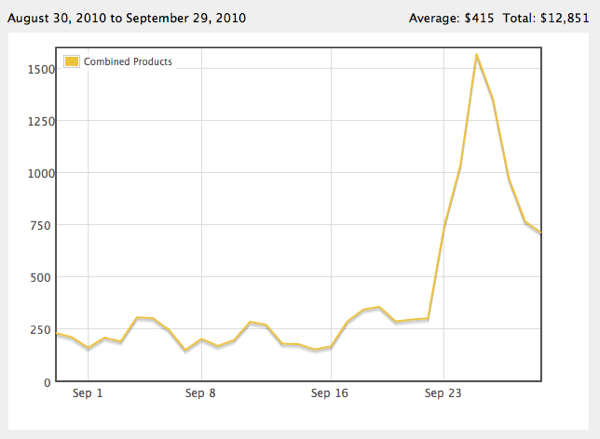
 So I decided to start cheap and work my way up from the bottom. First I had to decide if I even liked this whole working-while-standing thing. I wasn’t even sure I would be able to type! I thought about raising my desk with cinder blocks, but I would have to raise a lot and would make it very unstable. So instead, I created four stacks of books on top of my desk and put a board on top. Then I was able to put the keyboard, computer, and monitor on the board and give that a try.
So I decided to start cheap and work my way up from the bottom. First I had to decide if I even liked this whole working-while-standing thing. I wasn’t even sure I would be able to type! I thought about raising my desk with cinder blocks, but I would have to raise a lot and would make it very unstable. So instead, I created four stacks of books on top of my desk and put a board on top. Then I was able to put the keyboard, computer, and monitor on the board and give that a try. At this point I decided that the stack of books was too annoying, but I wasn’t quite ready for an expensive desk. So I picked up a
At this point I decided that the stack of books was too annoying, but I wasn’t quite ready for an expensive desk. So I picked up a 
